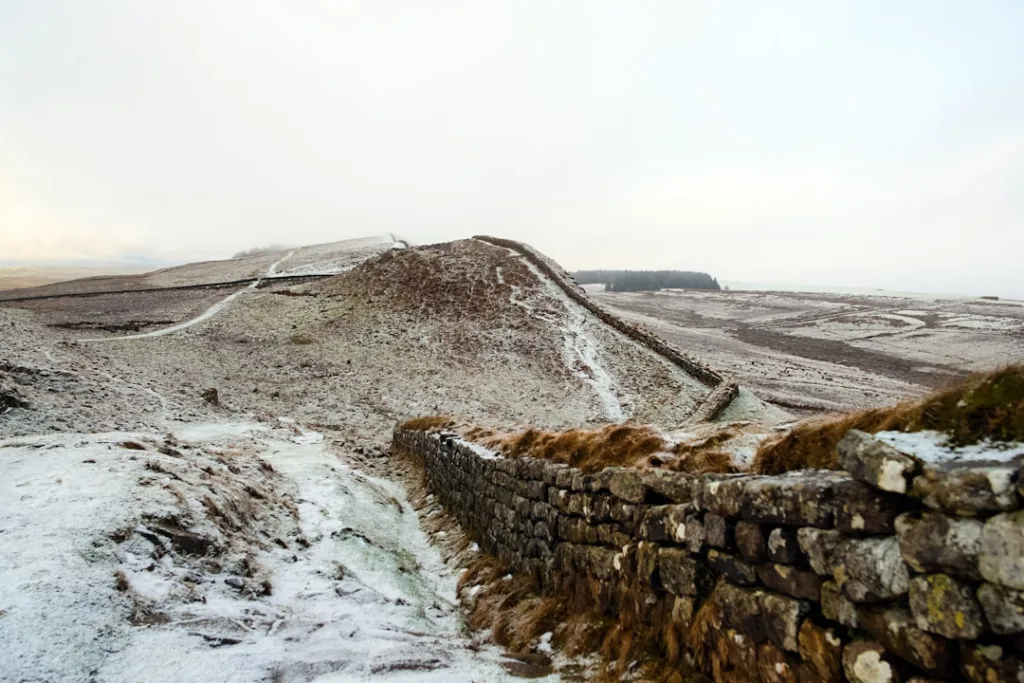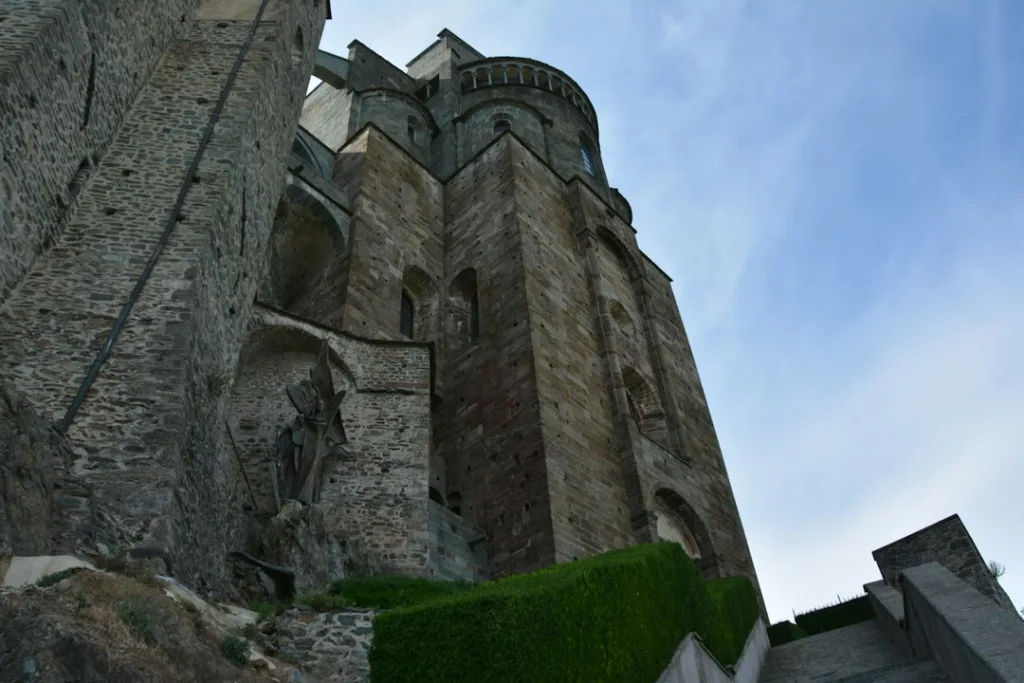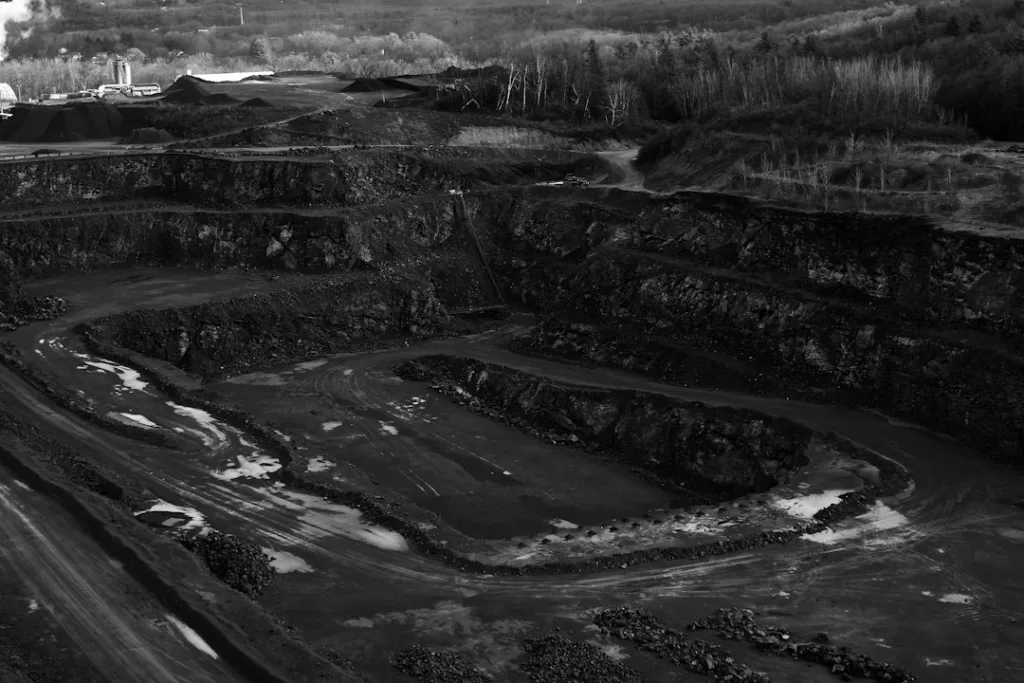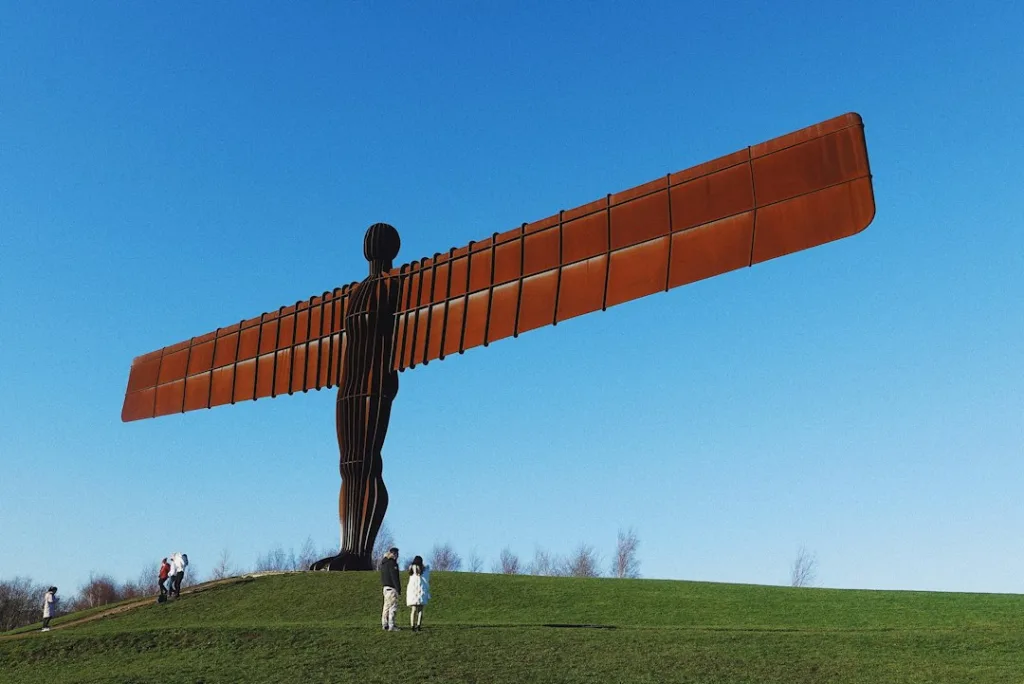
The Romans and Hadrian’s Wall
The first major historical influence on Northumberland was the Roman Empire, which conquered most of Britain in the 1st century AD. The Romans built a series of forts, roads, and settlements across the region, most notably Hadrian’s Wall, a 73-mile-long defensive barrier that marked the northern frontier of the empire. Hadrian’s Wall is now a UNESCO World Heritage Site and one of the most visited attractions in Northumberland.
The Romans also interacted with the native Celtic tribes, such as the Brigantes and the Votadini, who lived in the area before and during the Roman occupation. The Romans introduced new technologies, such as pottery, metalwork, and coinage, as well as new religions, such as Christianity and Mithraism. The Romans also influenced the local language, as some Latin words were adopted into the Celtic dialects.

The Anglo-Saxons and the Kingdom of Northumbria
After the Romans withdrew from Britain in the 5th century AD, the region was invaded by various Germanic tribes, such as the Angles, the Saxons, and the Jutes. These peoples established several kingdoms in Britain, one of which was Northumbria, which covered most of northern England and southern Scotland. Northumbria was one of the most powerful and influential kingdoms in the early medieval period, and a centre of learning, art, and culture.
One of the most famous achievements of Northumbria was the Lindisfarne Gospels, a stunning illuminated manuscript of the four Gospels of the New Testament, produced by monks on the island of Lindisfarne in the 8th century AD. The Lindisfarne Gospels are regarded as one of the finest examples of Insular art, a style that combined Celtic, Anglo-Saxon, and Mediterranean influences. The Lindisfarne Gospels are now housed in the British Library in London, but a facsimile is on display at the Lindisfarne Priory, which is also a popular tourist destination in Northumberland.

The Vikings and the Danelaw
The 8th and 9th centuries AD saw the arrival of another group of invaders: the Vikings, who came from Scandinavia and raided, traded, and settled across Britain and Ireland. The Vikings had a significant impact on Northumberland, as they attacked and plundered many of the monasteries, towns, and villages in the region, such as Lindisfarne, Hexham, and Bamburgh. The Vikings also established their own settlements and kingdoms, such as the Danelaw, which covered most of eastern and northern England, and was ruled by Danish law and culture.
The Vikings also influenced the language, the place names, and the genetics of Northumberland. Many words in the local dialect, such as bairn (child), kirk (church), and beck (stream), are derived from Old Norse, the language of the Vikings. Many place names in Northumberland, such as Byker, Fenham, and Warkworth, also have Viking origins, as they end with -by (farm), -ham (village), or -worth (enclosure). Many people in Northumberland also have Viking ancestry, as DNA tests have shown that up to 30% of the population have Scandinavian genes.

The Normans and the Harrying of the North
The 11th century AD brought another wave of invaders: the Normans, who came from Normandy in France and conquered England in 1066. The Normans imposed their feudal system, their architecture, and their language on the country, and built many castles, cathedrals, and abbeys. One of the most famous Norman castles in Northumberland is Alnwick Castle, which dates back to the 11th century and is still the seat of the Duke of Northumberland. Alnwick Castle is also known for its appearances in films and TV shows, such as Harry Potter and Downton Abbey.
The Normans also faced resistance and rebellion from the local population, especially in the north, where the Anglo-Saxons and the Vikings still had strong ties and traditions. In 1069, a large uprising took place in Northumberland, supported by the King of Denmark and the King of Scotland. The Normans responded with a brutal campaign of destruction and slaughter, known as the Harrying of the North, which devastated the region and killed or displaced thousands of people. The Harrying of the North left a lasting scar on the history and culture of Northumberland, as it reduced its population, its wealth, and its influence.
The Middle Ages and the Border Wars
The Middle Ages were a turbulent and violent time for Northumberland, as it was caught in the crossfire of the wars between England and Scotland, which lasted for centuries. The border between the two countries was constantly changing and disputed, and the people living in the borderlands suffered from raids, invasions, and sieges. The castles and fortifications in Northumberland, such as Bamburgh Castle, Warkworth Castle, and Berwick-upon-Tweed, were often the scenes of battles and bloodshed, as they changed hands between the English and the Scots.
The people of Northumberland also developed their own way of life and culture, as they adapted to the harsh and lawless conditions of the borderlands. One of the most notorious and fascinating aspects of this culture was the Border Reivers, a group of outlaws and raiders who operated on both sides of the border, stealing cattle, goods, and people. The Border Reivers were often loyal to their family and clan, rather than to their country or king, and had their own codes of honour and justice. The Border Reivers left a legacy of folklore, ballads, and surnames, such as Armstrong, Graham, and Robson, in Northumberland.
The Renaissance and the Reformation
The 15th and 16th centuries saw the emergence of the Renaissance, a cultural movement that revived the classical learning and art of ancient Greece and Rome, and the Reformation, a religious movement that challenged the authority and doctrines of the Catholic Church. Both movements had an impact on Northumberland, as they brought new ideas, innovations, and conflicts to the region.
One of the most notable examples of the Renaissance in Northumberland is the Alnwick Garden, a lavish and elaborate garden that was created by the Percy family, the Earls and Dukes of Northumberland, in the 16th century. The Alnwick Garden features a variety of plants, fountains, sculptures, and structures, such as the Grand Cascade, the Poison Garden, and the Treehouse. The Alnwick Garden is one of the largest and most visited gardens in Europe, and a testament to the artistic and architectural vision of the Percy family.

The Industrial Revolution and the Coal Industry
The 18th and 19th centuries witnessed the Industrial Revolution, a period of rapid economic and social change that transformed Britain and the world. The Industrial Revolution was driven by the development of new technologies, such as steam engines, railways, and factories, and the exploitation of natural resources, such as coal, iron, and cotton. The Industrial Revolution had a major impact on Northumberland, as it turned it into one of the leading coal-producing regions in the country, and a hub of trade and transport.
The coal industry in Northumberland was vital for the economy, the society, and the culture of the region, as it provided jobs, income, and energy for millions of people. The coal industry also shaped the landscape, the environment, and the identity of Northumberland, as it created new towns, villages, and communities, such as Ashington, Bedlington, and Cramlington, and left behind a legacy of mines, pits, and collieries, some of which are now museums and heritage sites. The coal industry also inspired the art, the music, and the literature of Northumberland, such as the paintings of the Pitmen Painters, the songs of the Northumbrian Minstrelsy, and the novels of Catherine Cookson.

The 20th Century and the World Wars
The 20th century was a time of great upheaval and transformation for Northumberland, as it faced the challenges and the opportunities of the modern world. The 20th century was also marked by two world wars, which had a profound effect on the region, as it witnessed the horrors and the heroism of war. Northumberland played an important role in both world wars, as it provided soldiers, sailors, airmen, and workers for the war effort, and hosted military bases, factories, and hospitals for the war operations.
The world wars also had a lasting impact on the memory and the culture of Northumberland, as they resulted in the loss and the sacrifice of many lives, and the creation and the preservation of many monuments, memorials, and traditions. One of the most iconic symbols of the world wars in Northumberland is the poppy, a red flower that grows in the fields where many soldiers died, and that is worn as a sign of remembrance and respect. The poppy is also featured in the art, the poetry, and the ceremonies of Northumberland, such as the installation of the Poppies: Wave at Woodhorn Museum, the recitation of the poem In Flanders Fields by John McCrae, and the observance of the Remembrance Day on November 11th.

The 21st Century and the Future
The 21st century is a time of great change and opportunity for Northumberland, as it faces the challenges and the possibilities of the global and digital world. The 21st century is also a time of great pride and identity for Northumberland, as it celebrates its past and looks forward to its future. Northumberland is a region that has a rich and diverse history and culture, that has been shaped by many different peoples and events, and that has contributed to the nation and the world in many ways.
One of the most iconic symbols of the 21st century in Northumberland is the Angel of the North, a colossal steel sculpture that stands on a hill overlooking the A1 road near Gateshead. The Angel of the North was designed by Antony Gormley and completed in 1998, and is one of the largest and most recognisable public artworks in the world. The Angel of the North represents the industrial heritage, the spiritual aspiration, and the creative vision of Northumberland, and is a landmark that welcomes and inspires visitors and residents alike.
Northumberland is a county that is part of England, but also has its own character and charm, as it is influenced by its neighbours, Scotland and the North Sea. Northumberland is a county that is represented by its flag, a red cross on a yellow background, which symbolises the blood and the gold of its history and culture. Northumberland is a county that is more than just a place, it is a story.

